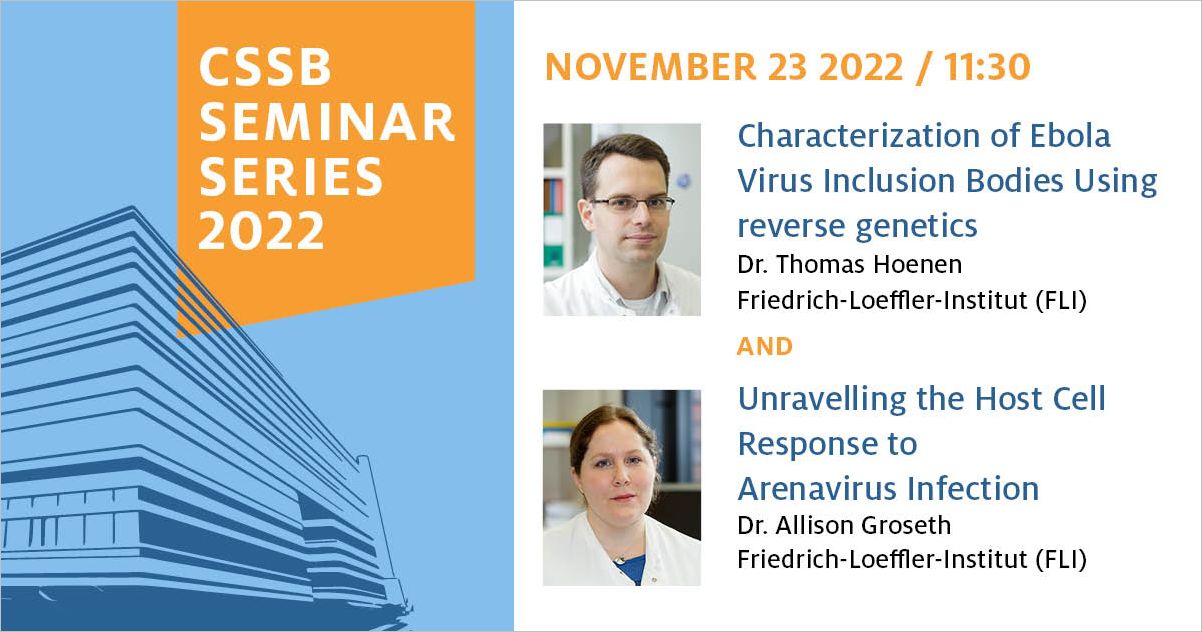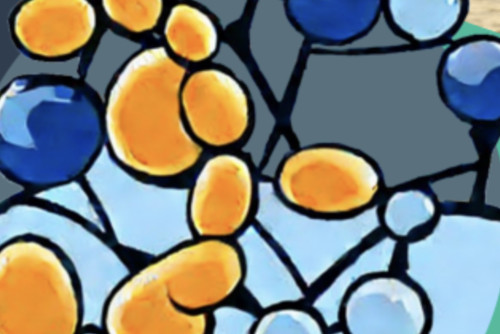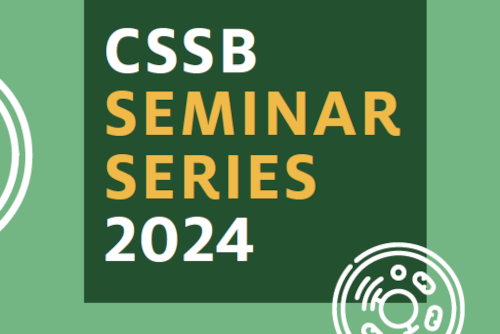CSSB Seminar Series - ALLISON GROSETH and THOMAS HOENEN

Abstract Allison Groseth:
The arenaviruses are an important group of pathogens that includes both agents of severe human disease and many closely related family members that are often apathogenic. The basis for this difference remains poorly understood, however, the regulation of host cell responses to infection appear to be important. We have found that while both apathogenic (i.e. Tacaribe virus, TCRV) and highly pathogenic (i.e. Junín virus, JUNV) viruses induce the activation of stress-activated protein kinases (i.e. p38, JNK), associated with induction of p53 and resulting upregulation of proapoptotic factors (i.e. Puma, Noxa), JUNV but not TCRV can suppress cell death through caspase cleavage of its nucleoprotein (NP). Surprisingly, there seems to be little direct impact of apoptotic cell death on virus growth - rather, several factors involved in this process appear to contribute to virus infection through indirect mechanisms. Specifically, we found that caspase-induced PS-flipping supports the ability of TCRV, which cannot use the human form of the primary receptor, to efficiently infect macrophages. Further, we found that JUNV’s ability to use its NP as a caspase decoy generates NP isoforms that retain exonuclease activity and, due to their increased availability in the cytoplasm, are better positioned to combat dsRNA accumulation and subsequent RNA sensor activation. However, our recent work on dissecting the IFN inhibitory functions of NP suggest that its exonuclease function actually plays only a minor role in IFN antagonism, but may rather be important for control of other dsRNA responses, such as that through PKR – an observation that could provide a mechanistic basis for the lack of cytokine activation observed in response to JUNV infection in primary target cells such as macrophages, and thereby contribute to the successful establishment of infection.
Abstract Thomas Hoenen:
Viral RNA synthesis of non-segmented negative-sense RNA viruses (NNSVs) often takes place in inclusion bodies (IBs), which for some of these viruses have been shown to have properties of liquid organelles. Such liquid organelles are formed by liquid-liquid phase separation of scaffold proteins, and often additional polymers such as RNA. It is believed that this is driven by intrinsically disordered regions (IDRs) and/or multiple copies of interaction domains (MCIDs), which for NNSVs are located in the respective phosphoproteins and nucleoproteins.
For Ebola virus (EBOV), its nucleoprotein NP has been shown to be sufficient to form IBs. Using a combination of live cell microscopy, fluorescence recovery after photobleaching assays, and mutagenesis approaches together with reverse genetics-based generation of recombinant viruses we have studied the formation of EBOV IBs. Our results demonstrate that also EBOV IBs are, indeed, liquid organelles, but that the largest IDR of NP does not play a major role in their formation, whereas an NP:NP interaction domain is essential for this. Further, our data indicate that while the phosphoprotein-equivalent of EBOV is not required for IB formation, it modulates their biophysical properties, as does RNA synthesis. Given the central role of IBs in the EBOV life cycle, this insight into their formation and characteristics has the potential to provide new possibilities for countermeasure development.



